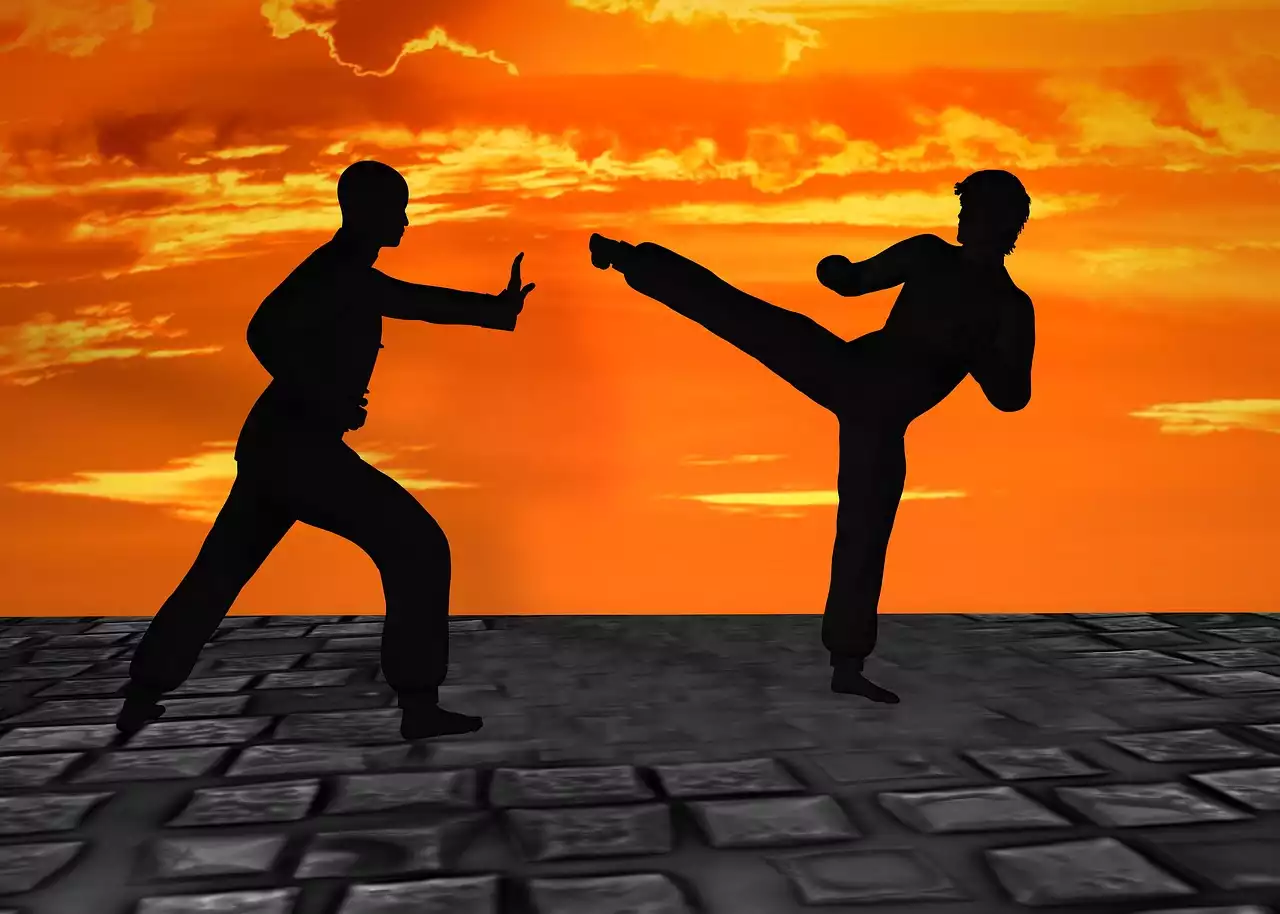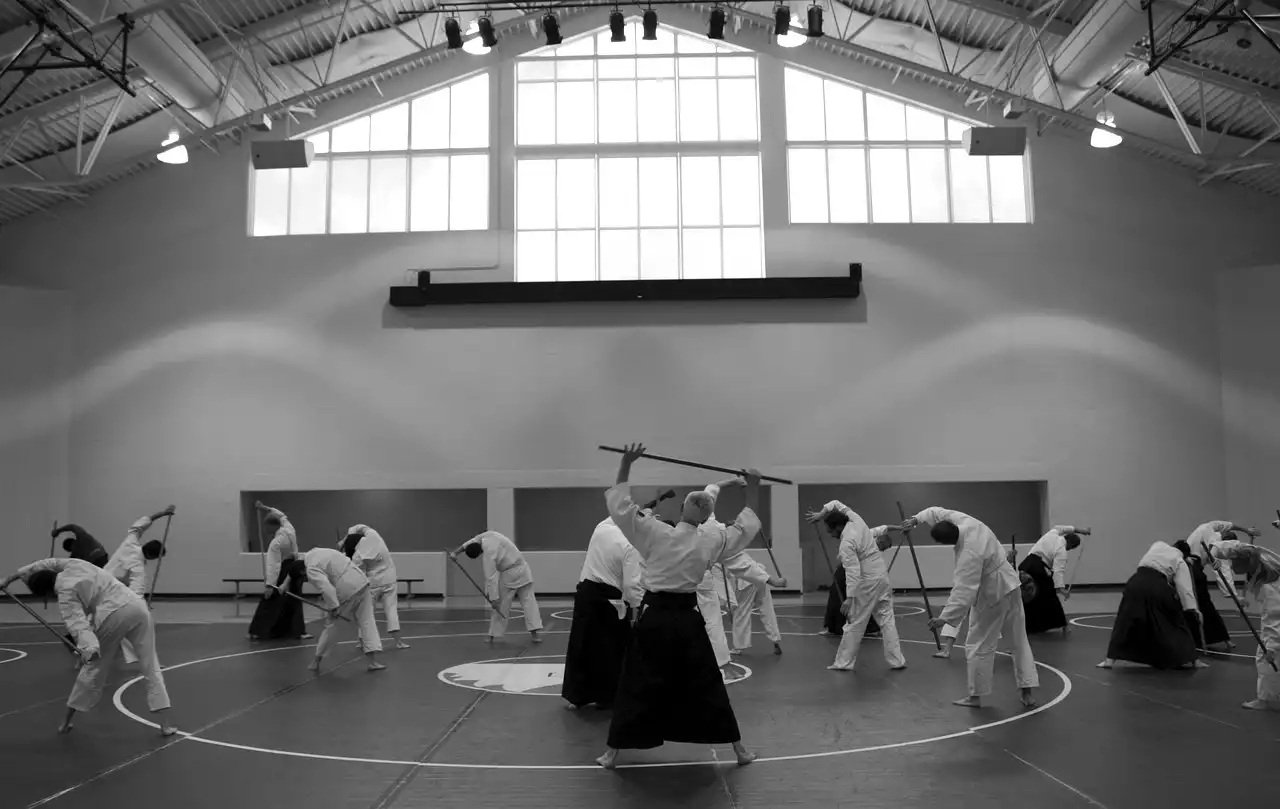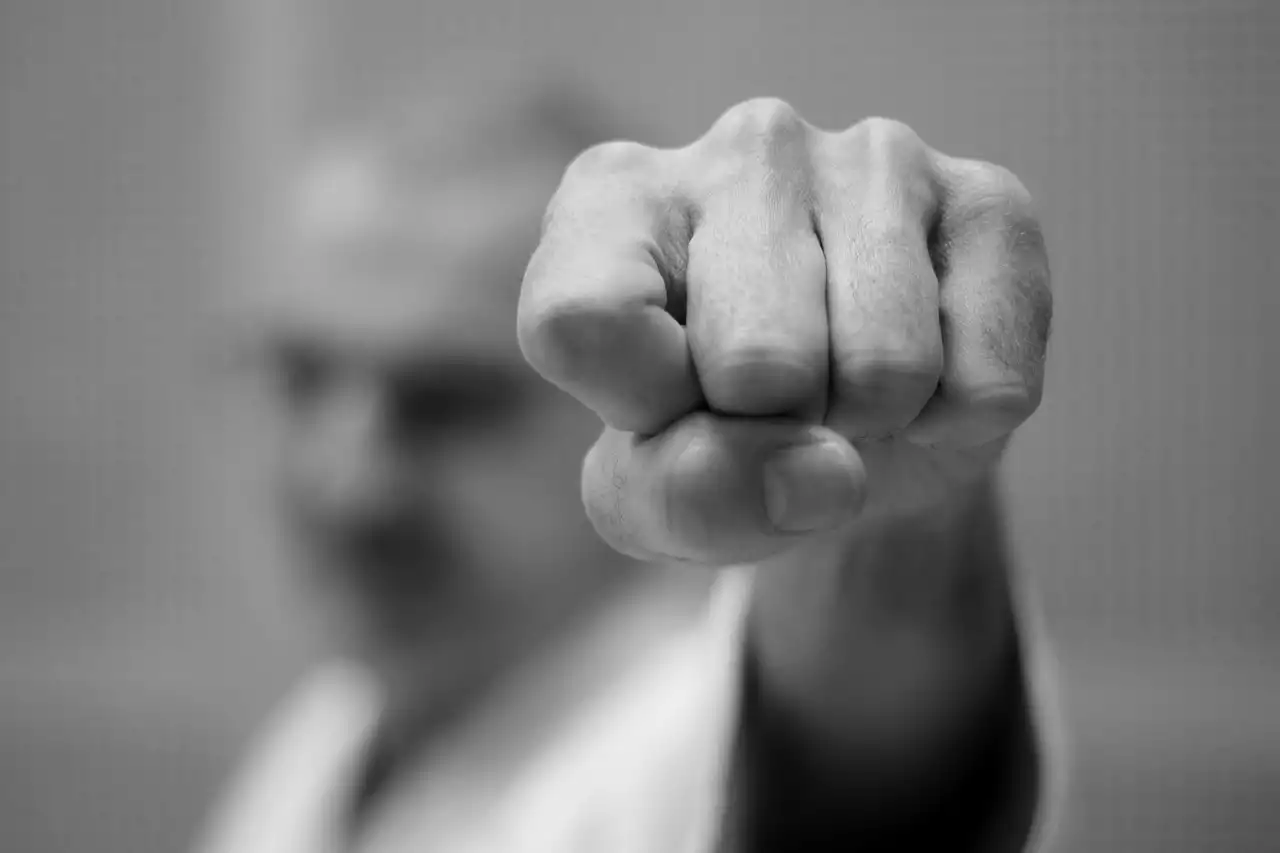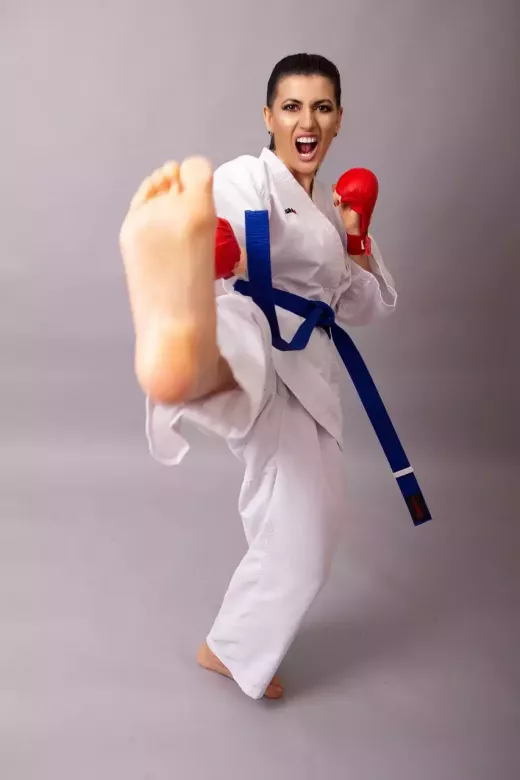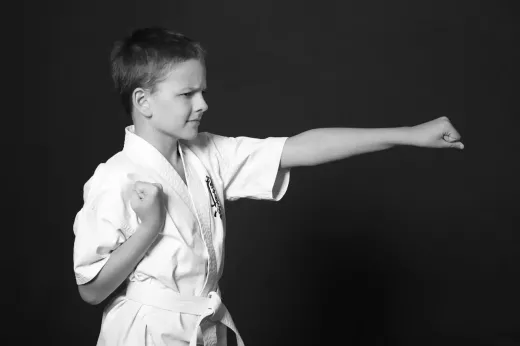Benefits of practicing martial arts
Practicing martial arts can be greatly beneficial for your physical and mental health. Here are some of the benefits of practicing martial arts:
Physical health benefits
Martial arts training involves a lot of physical activity, which can help you stay fit and healthy. Here are some of the ways that martial arts training can benefit your physical health:
Improved cardiovascular health: Martial arts training involves a lot of movement, which can help improve your cardiovascular health.
Increased strength and endurance: Martial arts training can help you build strength and endurance, which can improve your overall fitness levels.
Improved balance and flexibility: Martial arts training involves a lot of movements that require balance and flexibility, which can improve your overall physical performance.
Mental health benefits
Martial arts training can also be beneficial for your mental health. Here are some of the ways that martial arts training can benefit your mental health:Improved focus and concentration: Martial arts training requires a lot of focus and concentration, which can help improve your ability to focus in other areas of your life.
Stress relief: Martial arts training can be a great way to relieve stress and improve your overall mental well-being.
Increased self-confidence: Martial arts training can help improve your self-confidence and self-esteem, which can have a positive impact on various aspects of your life.
Essential martial arts techniques for beginners
As a beginner in martial arts training, it's essential to master the basic techniques of your chosen martial arts discipline. Here are some of the essential martial arts techniques that you should focus on:
Striking techniques
Striking techniques involve using your hands, feet, elbows, and knees to strike your opponent. Here are some of the basic striking techniques that you should learn:
Jab: The jab is a basic punch that involves extending your lead hand straight out.
Cross: The cross is a powerful punch that involves using your rear hand to punch straight across your body.
Hook: The hook is a punch that involves swinging your arm in a circular motion to hit your opponent from the side.
Roundhouse kick: The roundhouse kick involves swinging your leg in a circular motion to hit your opponent with the top of your foot.
Grappling techniques
Grappling techniques involve using your body to control your opponent's body. Here are some of the basic grappling techniques that you should learn:Mount: The mount is a dominant position in which you sit on top of your opponent's chest.
Side control: Side control is a dominant position in which you lie across your opponent's chest.
Rear naked choke: The rear naked choke is a submission hold that involves wrapping your arm around your opponent's neck and applying pressure.
Blocking techniques
Blocking techniques involve using your arms and legs to block your opponent's attacks. Here are some of the basic blocking techniques that you should learn:High block: The high block involves raising your forearm to block attacks aimed at your head.
Low block: The low block involves using your forearm to block attacks aimed at your lower body.
Inside block: The inside block involves using your forearm to block attacks aimed at your midsection.
Proper warm-up and stretching exercises
Before starting your martial arts training, it's essential to warm up your body properly to prevent injuries. Here are some of the warm-up and stretching exercises that you should do before your training:Jumping jacks: Jumping jacks are a great way to get your heart rate up and warm up your muscles.
Running in place: Running in place is a great way to warm up your legs and get your heart rate up.
Arm circles: Arm circles can help warm up your shoulders and upper body.
Leg swings: Leg swings can help warm up your hips and legs.
Stretching: Stretching is an essential part of any warm-up routine. Make sure to stretch all of your major muscle groups, including your legs, arms, and back.
Importance of proper breathing techniques
Proper breathing techniques are essential in martial arts training. Here are some of the benefits of proper breathing techniques:Improved focus and concentration: Proper breathing can help improve your focus and concentration, which can have a positive impact on your overall martial arts performance.
Improved energy levels: Proper breathing can help improve your energy levels, which can help you perform better during your training.
Reduced stress: Proper breathing can help reduce stress and anxiety, which can have a positive impact on your overall mental well-being.
Tips for improving flexibility and balance
Flexibility and balance are essential components of martial arts training. Here are some tips for improving your flexibility and balance:
Stretching: Stretching is an essential part of any martial arts training routine. Make sure to stretch all of your major muscle groups regularly.
Yoga: Yoga can be a great way to improve your flexibility and balance. -
Balance exercises: Balance exercises, such as standing on one leg or practicing on a balance board, can help improve your balance and stability.
Basic martial arts equipment and gear
Martial arts training requires some basic equipment and gear. Here's a list of the essential gear that you'll need:
Uniform: A martial arts uniform, also known as a gi, is a traditional uniform worn by practitioners of many martial arts styles.
Protective gear: Depending on your martial arts discipline, you may need protective gear, such as gloves, headgear, and shin guards.
Training equipment: You may need training equipment, such as punching bags, focus mitts, or kicking shields, depending on your martial arts discipline.
Finding the right martial arts school
Choosing the right martial arts school is essential to your success as a martial artist. Here are some tips for finding the right martial arts school:Research: Do your research and find out what martial arts styles are available in your area.
Visit schools: Visit different martial arts schools and observe their classes to see if they're a good fit for you.
Talk to instructors: Talk to the instructors and ask them about their teaching style and philosophy.
Martial arts etiquette and discipline
Martial arts training is not just about physical techniques; it's also about developing discipline and respect. Here are some of the essential martial arts etiquette and discipline rules that you should follow:Bow before entering and leaving the training area: Bowing is a sign of respect in martial arts training.
Listen to your instructor: Your instructor is there to teach you, so make sure to listen and follow their instructions.
Show respect to your training partners: Martial arts training involves working with partners, so make sure to show them respect and follow proper etiquette.
Common mistakes to avoid in martial arts training
As a beginner in martial arts training, it's important to be aware of common mistakes and avoid them. Here are some of the common mistakes to avoid:
Neglecting warm-up and stretching exercises: Neglecting warm-up and stretching exercises can increase your risk of injury.
Not focusing on proper technique: Focusing on proper technique is essential to your success in martial arts training.
Ignoring safety rules: Ignoring safety rules can lead to serious injuries during training.
